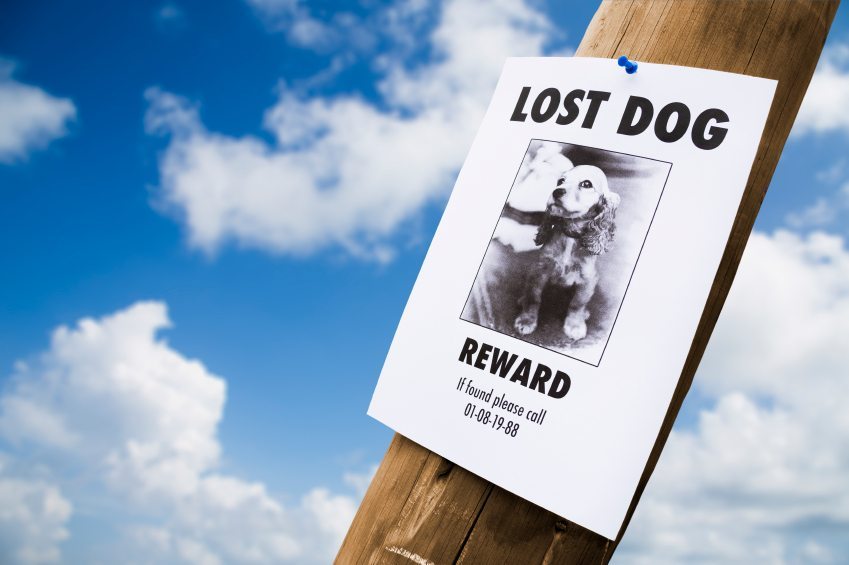
You know the feeling you have when you call your dog’s name and she doesn’t come running to see you. Or maybe somebody accidentally left the gate open and wasn’t supervising to make sure your dog didn’t go explore the neighborhood.
How many of us have jumped in our cars or trucks and driven around the neighborhood calling our beloved friend’s name?
And then it happens. It starts to get dark and it’s cold.
If you own a purebred, there may even be the thought running through your mind that someone has taken her. And all you can think about is getting her back.
Here’s some information to help you work toward finding your dog and bringing her home safe and sound.
Timing is Everything
Getting the word out about your lost dog within the first 24 hours is important. This is the same timing you’ve seen with missing person’s cases. The sooner you go looking for her, the sooner you should find her. It means that the search area should be smaller if you’re looking for her quickly.
Phone Numbers
This is one of the most important reasons why you want have a phone number on your dog’s ID tag and/or collar.
Now, this won’t matter if someone who has taken her removed her collar. But there’s one other thing you can do to be able to prove she’s yours if you need to: Microchip.
Microchip
This information goes more for prevention rather than location but it’s also helpful. Putting a microchip on your dog is as simple as your vet slipping the chip under the skin around the shoulder blades. If you find your dog with someone you don’t know, you can prove she’s yours by taking her to a vet that has a scanner and running that scanner over her back. Keep the chip number handy.
Start Calling
Make sure you call all of the local animal shelters and veterinarians offices as well as the police department to alert the local animal control officers. Make sure to give a phone number for callback that is different than the one that appears on your dog’s identification tag or collar.
Put together a lost dog flyer with the most recent picture you have of your furry friend. This way you can show people in the area and ask if they have seen your dog.
What to Bring When Searching
As you’re searching for your dog, bring something they love to play with. If it’s a squeaky toy bring it and squeak it every time you call her name.
After the First 24 to 48 Hours
Post flyers in vet’s offices, at the shelter and also around the neighborhood. If you have a Facebook account, post your flyer there as well.
- Spread the word to joggers and others who may be walking or biking in the area.
- Get chatty with the UPS and Fed Ex drivers and ask them to keep an eye during their routes.
- Visit the local shelters. Do not rely on a volunteer or staff member to correctly identify your dog. If the shelter is full of dogs it may be harder for them to identify one stray from the next.
- Don’t forget to ask if they have other areas of the shelter where they may house sick or injured animals.
A note about lists like Craigslist: There are those out there who search Craigslist for ads like yours for a lost dog. Be careful of anyone answering an ad like this because there could be unsavory consequences like a demand for ransom without having your dog. If you go meet somebody who has responded to your ad on Craigslist, do it in a very public place or even at the local police station.
Most importantly, keep a positive attitude and keep looking.
Reference link: http://www.cesarsway.com/dog-training/leadership/What-to-do-if-your-dog-goes-missing
Photo Credit: istockphoto.com










